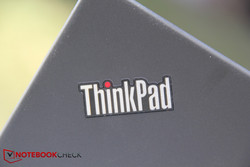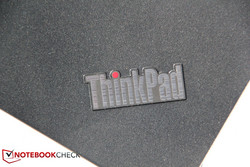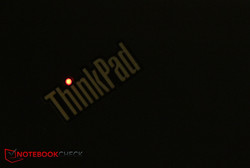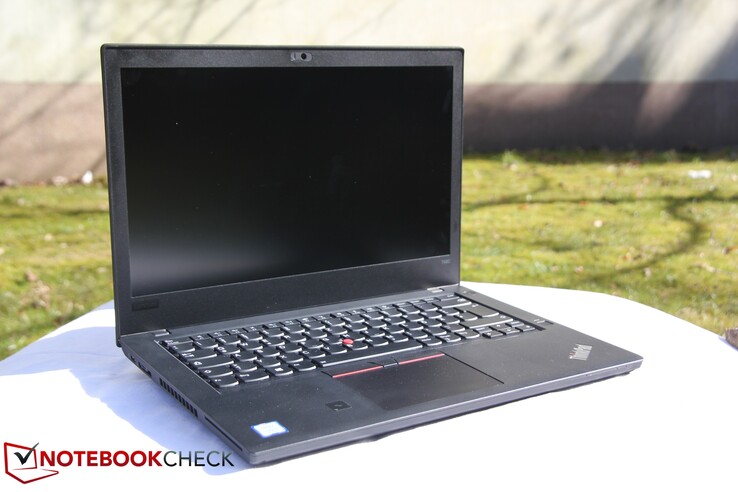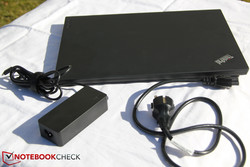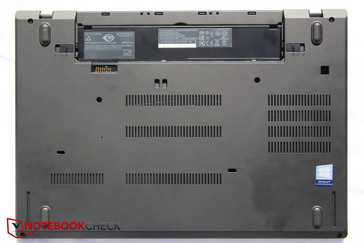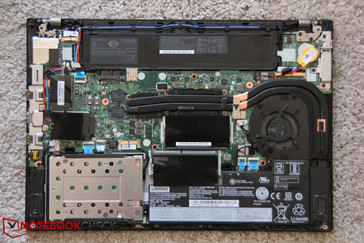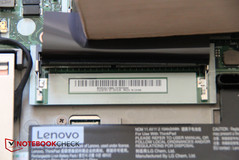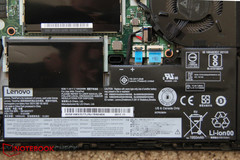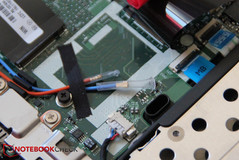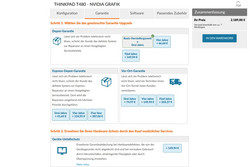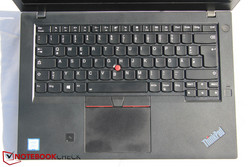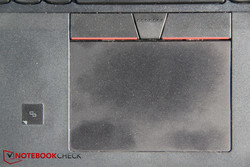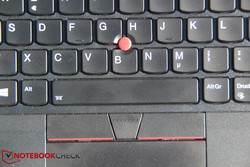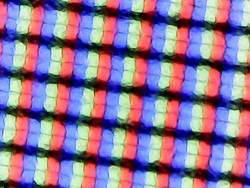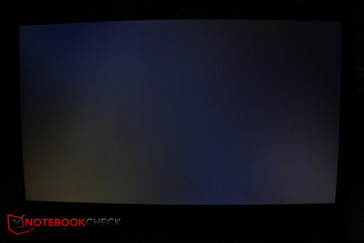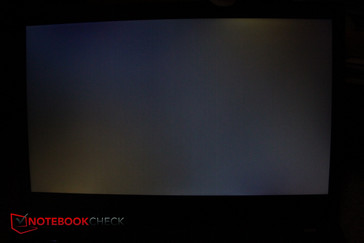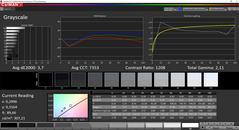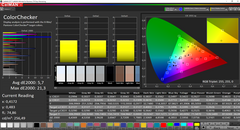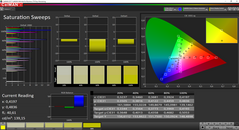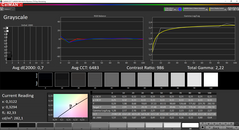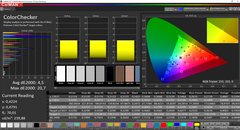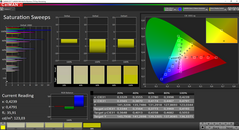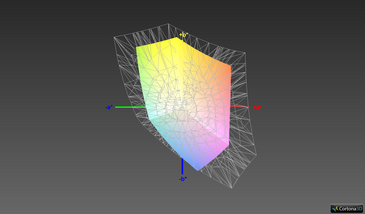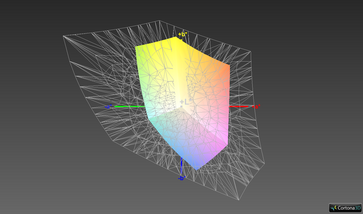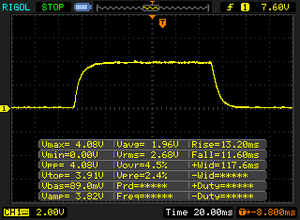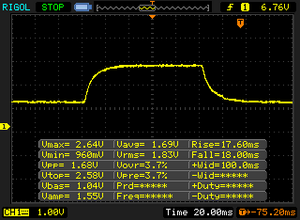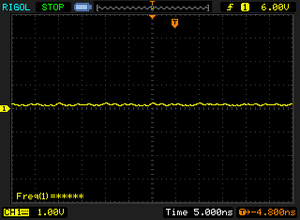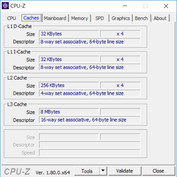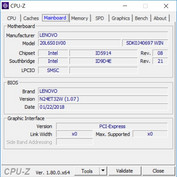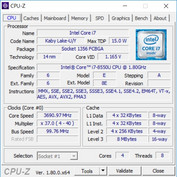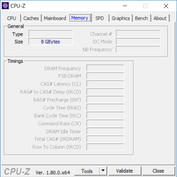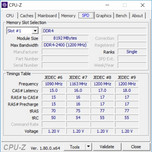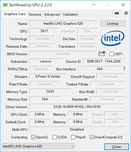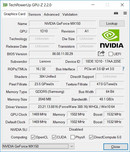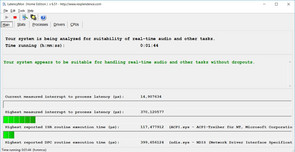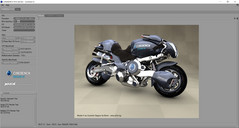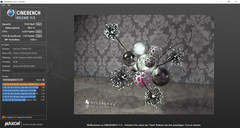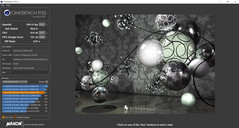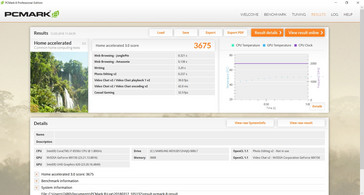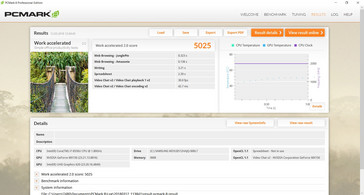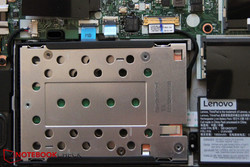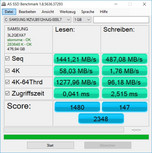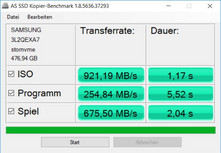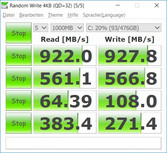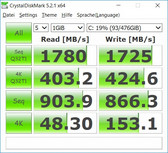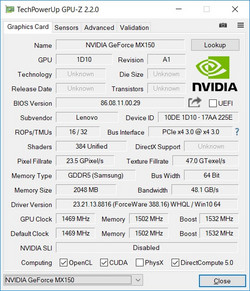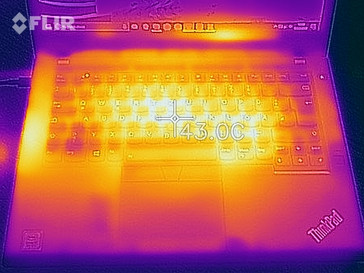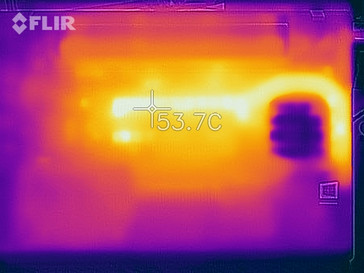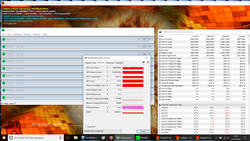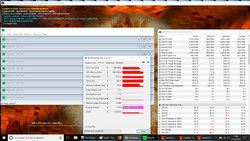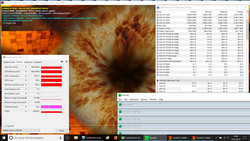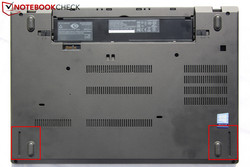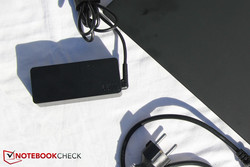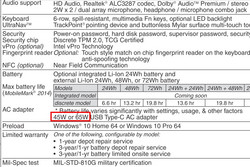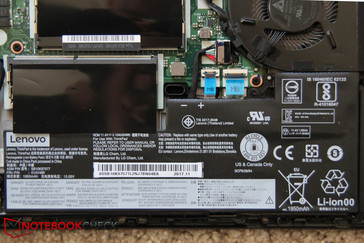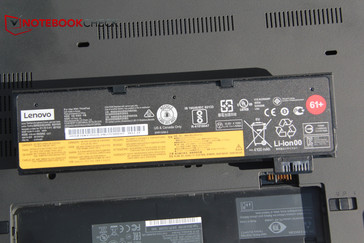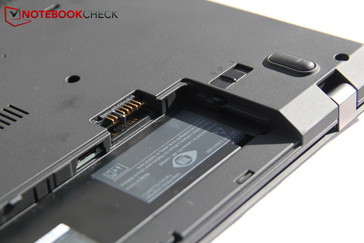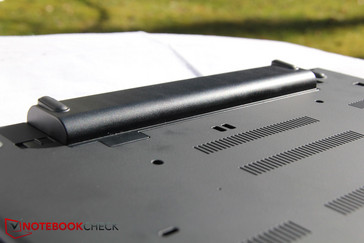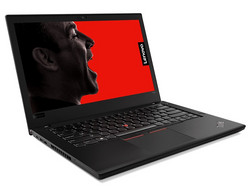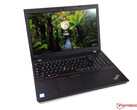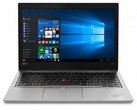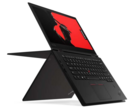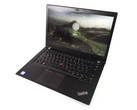Lenovo ThinkPad T480 (i7-8550U, MX150, FHD) Laptop Review

The paragon of business laptops proceeds to the next round and delivers us a device with a Kaby Lake Refresh CPU. A little over a year ago, we reviewed the predecessor T470, which managed to get a pretty high score of 91%. While the T470 saw its case completely redesigned, the T480’s case remains almost completely unchanged. We were able to get our hands on the new ThinkPad T480 through Lenovo’s Campus Program. This device with a GeForce MX150 is intended for students, teachers and scientific workers and has a price tag of just 1399 Euros (~$1725). If you put together all of the components found in this special version in the configurator in Lenovo’s online store, you will find that such a device costs approximately 1700 Euros (~$2096).
Lenovo’s ThinkPad laptop offers a lot of customization when it comes to hardware components. This means that you can customize the business notebook to fit your personal needs. The secondary battery, which can be added to the main internal battery, is a special feature here. We will focus in greater detail on other hardware configurations in other sections of our review.
We will also pay close attention to the differences to the predecessor T470. At the same time, we will also take a look at the similarly new and somewhat more refined T480s, which has two times the RAM and an almost identical hardware configuration. The T480s can be had for 1499 Euros (~$1848) through Lenovo’s Campus Program. Besides the sibling and predecessor models, the new ThinkPad will also have to compete against such devices as the Dell Latitude 5490, the HP EliteBook 840 and the Fujitsu LifeBook U747. For gaming and graphics benchmarks, we also selected the ThinkPad T470p, which comes with a GeForce 940MX and a CPU that is not very often found in business laptops.
Case - Lenovo PC with an extra battery
Last year, Lenovo gave the T470’s case a long-overdue overhaul. However, the T480’s case remains completely unchanged. You can learn more about the case in our review of the predecessor model.
The manufacturer relies on a black case with a seemingly rubberized surface. This is why the device is very easy to hold. However, this makes the laptop very susceptible to smudges. The chassis is made of rough plastic and is therefore very rigid. The keyboard area does not exhibit a lot of flex, either. Nevertheless, the chassis is not completely torsion-resistant. When we apply pressure to it, the chassis makes creaking and popping sounds, especially at the right-hand edge where the fingerprint sensor is located. The hinges have no problem holding the display lid in a set position and have an opening angle of 180 degrees.
The display lid is very thin, which makes it look great. But this comes at the cost of rigidity. That a display lid can be bent should come as no surprise. However, in this case, bending the display lid even slightly results in ugly halos at the edges of the screen. Our suspicion is that the thin display suffers from screen-bleeding and that backlight bleeding becomes severely exacerbated when the display is bent. There is more about this in the “Display” section.
A “ThinkPad” logo adorns one of the corners on the upper side of the case. The dot in the letter “i” comes as a red LED light, which turns on when the laptop is powered on. The underside reveals one of the special features of the T480: An external battery can be added to an internal battery at the back of the device. However, adding an external battery increases the thickness of an otherwise thin device by 1 cm or 10 mm at the battery slot. The Lenovo ThinkPad T480 still does not offer a maintenance hatch.
When it comes to the dimensions, the ThinkPad T480 is almost identical to its predecessor T470. The somewhat more expensive T480s is a few millimeters smaller and thinner than the standard T480. That being said, most competitors come with similar dimensions.
Measuring the weight is not that easy, though, because the additional battery has quite an impact on the overall weight of the device. The relatively high overall weight of 1.8 kg (3.96 lbs) can be attributed to the 48-Wh ancillary battery. Here all other competing devices weigh at least 400 grams (0.88 lbs) less. Removing the external battery reduces the weight of the device to 1480 grams (3.26 lbs). This significantly narrows the weight gap between the T480 and the competition. People who can forgo a secondary battery will benefit greatly from the lower weight of the device without an additional battery, especially so when they are out and about. The predecessor with the secondary battery hooked on weighed about as much as our current review device.
Ports - Almost like the ThinkPad T470
In terms of the ports, only slight changes were made when compared to the Lenovo T470: On the left-hand side, a previously-available USB Type-A port has been replaced by a Docking port, which used to be located on the underside. Many extras from Lenovo can be connected through this port. This is why the number of normal USB 3.0 Type-A ports has been reduced to only two. That being said, the Docking port is connected via Thunderbolt 3. The power jack has also been removed. The ThinkPad T480 now charges via a USB Type-C port. The performance of the USB 3.0 ports is in good order. We measured transfer rates of about 370 MB/s with our external Samsung T3 SSD.
Besides the usual stuff like USB ports, Ethernet, HMDI-out and an SD card reader, our review model also offers an optional SmartCard reader. The manufacturer forgoes a VGA connector (this type of connector is still used in some businesses). However, if need be, you can always use the included VGA adapter to connect to a VGA display or projector. The positioning of the ports is sensible for the most part. However, the ports on the right-hand side are located too close to the front of the device. This can potentially cause some problems for right-handed individuals who wish to use an external mouse. There are no ports on the front or the back of the device.
SD Card Reader
We measure the performance of an SD card reader with our reference-grade SD card Toshiba Exceria Pro SDXC 64 GB UHS-II. There are virtually no differences between our review device and the competition. Here, the Dell Latitude 5490 mercilessly crushes all other competing devices and is more than twice as fast as the rest of the competition. All other devices are separated from each other by no more than 3 to 7%. Our review device takes its place in the middle of the comparison group.
| SD Card Reader | |
| average JPG Copy Test (av. of 3 runs) | |
| Dell Latitude 5490-TD70X (Toshiba Exceria Pro SDXC 64 GB UHS-II) | |
| Lenovo ThinkPad T480-20L6S01V00 (Toshiba Exceria Pro SDXC 64 GB UHS-II) | |
| Lenovo ThinkPad T470-20HD002HGE (Toshiba Exceria Pro SDXC 64 GB UHS-II) | |
| Lenovo ThinkPad T480s-20L8S02E00 (Toshiba Exceria Pro SDXC 64 GB UHS-II) | |
| HP EliteBook 840 G4-Z2V49ET ABD (Toshiba Exceria Pro SDXC 64 GB UHS-II) | |
| Fujitsu LifeBook U747 (Toshiba Exceria Pro SDXC 64 GB UHS-II) | |
| Average of class Office (22.4 - 198.5, n=28, last 2 years) | |
| maximum AS SSD Seq Read Test (1GB) | |
| Dell Latitude 5490-TD70X (Toshiba Exceria Pro SDXC 64 GB UHS-II) | |
| Lenovo ThinkPad T470-20HD002HGE (Toshiba Exceria Pro SDXC 64 GB UHS-II) | |
| Lenovo ThinkPad T480s-20L8S02E00 (Toshiba Exceria Pro SDXC 64 GB UHS-II) | |
| Lenovo ThinkPad T480-20L6S01V00 (Toshiba Exceria Pro SDXC 64 GB UHS-II) | |
| HP EliteBook 840 G4-Z2V49ET ABD (Toshiba Exceria Pro SDXC 64 GB UHS-II) | |
| Fujitsu LifeBook U747 (Toshiba Exceria Pro SDXC 64 GB UHS-II) | |
| Average of class Office (25 - 249, n=26, last 2 years) | |
Communication
Things are similar in terms of wireless communication: The Lenovo ThinkPad T480 takes first place when it comes to transmission speeds, but it is only 2% faster than the slowest competing device. There are no major differences in terms of reception speeds, either. Here our review device falls well within the norm.
For wireless Internet browsing, our review device uses a tri-band Wireless AC module from Intel, which also supports Bluetooth 4.2. According to the manufacturer, the device is “ready” for a WWAN module. It comes with a slot for a WWAN module and also includes all the necessary antennas.
The resolution and the video quality of the HD webcam remain the same. The webcam features a sliding cover called the ThinkShutter.
Security
As a genuine business notebook, the T480 has several security features to offer: Besides the almost-obligatory TPM 2.0 module and the Kensington lock, the T480 also has many features to offer, such as NFC, the optional SmartCard reader and the always-included fingerprint reader. The fingerprint scanner works flawlessly with Windows Hello. However, our review device does not support Windows Hello’s face recognition feature. In addition, you can also enable the Computrace feature in the BIOS settings.
Accessories
The box contains the device itself, an external (secondary) battery and a 65-watt AC adapter. There is also a cut-down 45-watt power supply available. You can get other accessories on Lenovo’s website, but you will have to pay for them out of your own pocket. These additional accessories include things like other external batteries or several docking stations, which can be connected to the left-hand side of the device and which provide additional connectivity features or functions such as Wake-on-LAN.
Maintenance
The ThinkPad T480 does not offer a maintenance cover. In the predecessor’s case, the bottom cover could be removed after undoing just six screws. Positive: The screws do not fall out but remain in their slots after being undone. Removing the bottom cover is not so simple, though. This is because you will have to put quite a lot of effort into it, while at the same time taking care that you do not damage the bottom cover whilst you are trying to remove it. This is especially true in the area near the cut-out for an external battery. In trying to open the case, you will have to strike a right balance between sufficient force and necessary caution.
Users who clear those hurdles will be rewarded with access to the fans, internal battery, two RAM slots, one of which is occupied with an 8 GB DIMM, and the BOIS battery. The additional M.2 slot is also easily accessible. This slot can be used to install an additional SSD or even a WWAN module. The included SSD is located in a 2.5-inch drive bay, and the empty M.2 slot can be used to install a second SSD. However, this slot is intended for a WWAN card and therefore has a really small length. We figure that only M.2 SSDs in the 2242 form-factor can fit in it. The M.2 slot actually has the same length as Intel’s Optane drives. Such drives are very expensive, though.
Warranty
Lenovo provides a 12-month warranty for the battery and a 36-month manufacturer’s warranty for the rest of the device. The warranty can be extended in a variety of tiers with various prices. To extend the warranty to four years you will have to cough up 66.64 Euros (~$82), and extending the warranty to five years will cost you 149.94 Euros (~$184). A high-priority warranty package costs between 42 (~$51, three years) and 207 Euros (~$255, five years). An additional option that allows you to call a technician to your office or residence will cost you between 75 (~$92, three years) and 265 Euros (~$326, five years). An accidental damage protection plan will cost you about 150 Euros (~$184). It covers damage caused by drops, water ingress and power surges.
Please see our Guarantees, Return Policies and Warranties FAQ for country-specific information.
Input Devices - Outstanding ThinkPad T series
Keyboard
The built-in chiclet-style keyboard in the T480 is virtually unchanged when compared to the predecessor model and is still the best of its kind. The concave keys have a relatively long travel distance and are sure to please anyone who has a lot of typing to do because of their great actuation points and good responsiveness. However, the key markings require some getting used to. This mainly concerns the number keys, which sometimes have up to three different function markings on them. The situation is further complicated by the really small font that the key markings use.
The “F” keys feel smaller than in other competing devices. However, they are divided into four different clusters in a very clear fashion. The “Fn" key takes a lot of getting used to and is very awkwardly placed. It is located in the left-hand bottom corner and it actually displaces the control key, which has been moved to the right. This is why pressing Ctrl + LShift at the same time (to select text, for example) is such a struggle. Here your little finger just goes for the wrong key most of the time. That being said, you can remap the “Fn” key to the “Ctrl" key in the BIOS menu.
During typing, the keys are comfortably quiet. Only the larger keys like “Enter” and “Space” make somewhat louder noises. The keyboard in our model features a backlight with two different brightness levels. You can also get a model without the keyboard backlight from Lenovo’s website. Here we recommend that you pay close attention to the version you are getting.
Touchpad
The touchpad measures 10 x 7 cm (3.93 x 2.75 in). Its lower area can be used for clicking instead of the dedicated buttons. The click sounds are not very loud and are more or less on the same level as the sounds that the keys make during typing. The surface of the touchpad feels good to the touch and allows for easy finger-gliding (with dry fingers). The build quality is very solid. Nothing creaks or pops. Gestures (with up to four fingers) function perfectly well.
In addition, the T480 features a TrackPoint complete with dedicated mouse buttons. There are three buttons in total. The click sounds vary greatly depending on where you press the buttons. If you press the buttons at the very top then the click sounds are very quiet. However, if you press them at the bottom then they are significantly louder.
Display - High-end pressure-sensitive laptop
The Lenovo ThinkPad T480 offers four different panels. The HD panel, which has a very low brightness of 220 cd/m² and a resolution of just 1366x768, is no longer the norm and should be avoided. Our review device comes with a matte Full HD IPS panel from LG. According to LG, its brightness amounts to 250 cd/m². However, our measurements reveal that the panel in our review device has an average brightness of 295 cd/m² and a brightness distribution of 90%.
As feared, screen-bleeding rears its ugly head in our review model. However, this effect is rather mildly pronounced but still quite extensive. That being said, it is not annoying under normal conditions. However, when pressure is applied to the display, the screen-bleeding becomes much, much worse for a very short time.
Alternatively, there is also a Full HD panel with touch functionality. Moreover, Lenovo also offers a WQHD panel with a guaranteed brightness of 300 cd/m² and a resolution of 2560x1440.
| |||||||||||||||||||||||||
Brightness Distribution: 90 %
Center on Battery: 311 cd/m²
Contrast: 1228:1 (Black: 0.25 cd/m²)
ΔE ColorChecker Calman: 5.7 | ∀{0.5-29.43 Ø4.78}
calibrated: 4.7
ΔE Greyscale Calman: 3.7 | ∀{0.09-98 Ø5}
58.7% sRGB (Argyll 1.6.3 3D)
37.4% AdobeRGB 1998 (Argyll 1.6.3 3D)
40.56% AdobeRGB 1998 (Argyll 3D)
58.8% sRGB (Argyll 3D)
39.24% Display P3 (Argyll 3D)
Gamma: 2.11
CCT: 7353 K
| Lenovo ThinkPad T480-20L6S01V00 Lenovo LP140WF6-SPB7, , 1920x1080, 14" | Lenovo ThinkPad T470-20HD002HGE N140HCA-EAB, , 1920x1080, 14" | Lenovo ThinkPad T480s-20L8S02E00 LP140QH2-SPB1, , 2560x1440, 14" | Dell Latitude 5490-TD70X AU Optronics AUO263D, , 1920x1080, 14" | HP EliteBook 840 G4-Z2V49ET ABD AUO123D, , 1920x1080, 14" | Fujitsu LifeBook U747 LG LP140WF3, , 1920x1080, 14" | |
|---|---|---|---|---|---|---|
| Display | 6% | 75% | -8% | 40% | 55% | |
| Display P3 Coverage (%) | 39.24 | 41.6 6% | 71.4 82% | 36.28 -8% | 55.8 42% | 66.1 68% |
| sRGB Coverage (%) | 58.8 | 61.9 5% | 96.6 64% | 54.6 -7% | 80.7 37% | 84.8 44% |
| AdobeRGB 1998 Coverage (%) | 40.56 | 43.06 6% | 72.1 78% | 37.48 -8% | 57.7 42% | 62 53% |
| Response Times | -27% | -7% | -29% | -2% | 3% | |
| Response Time Grey 50% / Grey 80% * (ms) | 35.6 ? | 41.6 ? -17% | 36 ? -1% | 46.9 ? -32% | 39 ? -10% | 36 ? -1% |
| Response Time Black / White * (ms) | 24.8 ? | 34 ? -37% | 28 ? -13% | 31.2 ? -26% | 23 ? 7% | 23.2 ? 6% |
| PWM Frequency (Hz) | ||||||
| Screen | -6% | 22% | -2% | -44% | 10% | |
| Brightness middle (cd/m²) | 307 | 306 0% | 311 1% | 227 -26% | 346 13% | 291 -5% |
| Brightness (cd/m²) | 295 | 287 -3% | 302 2% | 211 -28% | 317 7% | 296 0% |
| Brightness Distribution (%) | 90 | 88 -2% | 91 1% | 88 -2% | 86 -4% | 84 -7% |
| Black Level * (cd/m²) | 0.25 | 0.3 -20% | 0.36 -44% | 0.19 24% | 0.86 -244% | 0.32 -28% |
| Contrast (:1) | 1228 | 1020 -17% | 864 -30% | 1195 -3% | 402 -67% | 909 -26% |
| Colorchecker dE 2000 * | 5.7 | 6.2 -9% | 3 47% | 5.6 2% | 8.64 -52% | 4.3 25% |
| Colorchecker dE 2000 max. * | 21.3 | 13.6 36% | 6.1 71% | 22.4 -5% | 13.58 36% | 7.5 65% |
| Colorchecker dE 2000 calibrated * | 4.7 | 1.7 64% | ||||
| Greyscale dE 2000 * | 3.7 | 5.8 -57% | 4 -8% | 2.4 35% | 11.24 -204% | 4.3 -16% |
| Gamma | 2.11 104% | 2.04 108% | 2.17 101% | 2.44 90% | 2.62 84% | 2.31 95% |
| CCT | 7353 88% | 6277 104% | 6961 93% | 6506 100% | 12530 52% | 6529 100% |
| Color Space (Percent of AdobeRGB 1998) (%) | 37.4 | 39.62 6% | 66.7 78% | 34.5 -8% | 52 39% | 55.46 48% |
| Color Space (Percent of sRGB) (%) | 58.7 | 61.44 5% | 96.7 65% | 54.4 -7% | 80 36% | 84.77 44% |
| Total Average (Program / Settings) | -9% /
-7% | 30% /
29% | -13% /
-7% | -2% /
-21% | 23% /
18% |
* ... smaller is better
The black value of 0.25 cd/m² and the contrast ratio of 1:1228 are also quite good. Our review device offers the highest contrast ratio in our comparison group. Moreover, the grayscale and color reproduction are also in good order. However, when it comes to the color reproduction, the maximum color deviations prove to be quite big.
Subjectively, the display does not look as good as our measurement data suggest it should. Here the screen-bleeding and the light artifacts, which appear when pressure is applied to the display, are to blame. In facts, these artifacts exacerbate the screen-bleeding to a great extent. When you try to move the display lid from one position to another, these artifacts show up. When you try to lay your hands on the wrist rest, these artifacts pop up. The only time they don't appear is when the display is not touched or moved. However, when there are no artifacts on the screen, then you can enjoy a good contrast ratio and great brightness.
Nevertheless, the display still manages to achieve top results in almost all measurement areas and would have been able to beat all of the competing devices had it not had such poor color-space coverage: 59% for sRGB and 37% for AdobeRGB are truly no top values. But then again, good color-space coverage is only important for (semi)-professional photo and video-editing. Except for the poor color-space coverage and the supposedly avoidable screen-bleeding, Lenovo delivers a very good display.
The display of the ThinkPad T480 meets all requirements for outdoor use. Its high brightness of nearly 300 cd/m², the good black value and the strong contrast ratio all ensure that the display is comfortable to work with outside and that the screen content is easy to read. In addition, the matte screen surface swallows up most of the annoying reflections.
Display Response Times
| ↔ Response Time Black to White | ||
|---|---|---|
| 24.8 ms ... rise ↗ and fall ↘ combined | ↗ 13.2 ms rise | |
| ↘ 11.6 ms fall | ||
| The screen shows good response rates in our tests, but may be too slow for competitive gamers. In comparison, all tested devices range from 0.1 (minimum) to 240 (maximum) ms. » 57 % of all devices are better. This means that the measured response time is worse than the average of all tested devices (20.2 ms). | ||
| ↔ Response Time 50% Grey to 80% Grey | ||
| 35.6 ms ... rise ↗ and fall ↘ combined | ↗ 17.6 ms rise | |
| ↘ 18 ms fall | ||
| The screen shows slow response rates in our tests and will be unsatisfactory for gamers. In comparison, all tested devices range from 0.165 (minimum) to 636 (maximum) ms. » 49 % of all devices are better. This means that the measured response time is worse than the average of all tested devices (31.6 ms). | ||
Screen Flickering / PWM (Pulse-Width Modulation)
| Screen flickering / PWM not detected | |||
In comparison: 53 % of all tested devices do not use PWM to dim the display. If PWM was detected, an average of 8108 (minimum: 5 - maximum: 343500) Hz was measured. | |||
As is usual for IPS panels, the viewing angles of our LG model are also very good. However, the brightness does fall sharply at acute viewing angles, especially when looking at the screen from the top.
The Lenovo laptop can also output 4K content with a frame rate of up to 60 FPS to an external display via Thunderbolt 3. You can only output 4K content at up to 30 FPS with the integrated HDMI 1.4 port.
Performance - Business laptop with graphics
Our configuration of the T480 comes with an Intel Core i7-8550U, an Nvidia GeForce MX150, 8 GB of RAM and a 512 GB SSD from Samsung. This is why the business notebook can be used not only for simple office work but also for image and video-editing and, to a very limited extent, for gaming. With its versatile security features, the T480 goes primarily after office workers, students, teachers and business customers.
During our latency test, the LatencyMon utility did not reveal any abnormalities. All drivers seem to be in good order, and we did not observe any stuttering or lagging.
Processor
The T480 is based on the Intel Core i7-8550U. This CPU has four physical cores and can process up to eight threads at the same time thanks to its Hyper-Threading capabilities. Moreover, the letter “U” is used to designate Intel’s energy-efficient, low TDP offerings, which are often found in business notebooks and ultrabooks. The CPU clock rate fluctuates between 1.8 and 4 GHz. Furthermore, the processor also has Intel’s integrated UHD Graphics 620 at its disposal.
In our 30-minute Cinebench R15 loop, we observed a drop in performance between the first and the second benchmark runs. After that things were pretty stable. This performance drop can be chalked up to the fact that the CPU is allowed to exceed its TDP of 25 watts only for a very short time (the CPU drew 29 watts for 28 seconds in this case). Here, the fall in performance amounted to roughly 5%. Subsequently, the TDP remained steady at 25 watts. However, it hit 15 watts as soon as the CPU reached its thermal limit.
When running on battery power, the clock rate fluctuates between 2 and 3 GHz in the multi-core benchmark. Here, the ThinkPad T480 exhibits an average clock rate of 2.1 GHz and loses 19% of its performance, delivering a score of just 516 points.
Attention: We noticed that the ThinkPad could not maintain its full performance under load over an extended period of time and that the performance would sometimes drop by as much as 40%. Apparently, there are certain processes that slow the system down, and restarting the device seems to fix this issue, no matter the temperature or previous load. However, we were not able to identify any specific processes or any other cause for that matter. That being said, after a BIOS update this issue seems to have gone away, and this is why we did not include these performance drops in our review.
The T480 takes second place in our comparison group. The sibling model T480s is 6% faster in the single-core section of the Cinebench R15 benchmark and 10% faster in the multi-core benchmark, even though it has the same CPU. The rest of the competition with slightly less powerful or older CPUs is at least 10% slower. All in all, the CPU performance is on the normal level for the i7-8550U. That being said, the CPU in the T480s is even faster.
System Performance
When it comes to the system performance, the T480 achieves very good results. Here, all of the devices are very close to each other. However, the T480 does manage to snag the top spot in the Work benchmark. In the Home benchmark, the Dell Latitude 5490 is only 1% faster. The pricier T480s is also somewhat slower. All in all, the T480 provides a great user experience. Everything seems to run smoothly and there is no lag to talk about.
| PCMark 8 Home Score Accelerated v2 | 3675 points | |
| PCMark 8 Work Score Accelerated v2 | 5025 points | |
| PCMark 10 Score | 3686 points | |
Help | ||
Storage Devices
A 512 GB SSD from Samsung (PM981) serves as the system drive. The T480 has a wide variety of storage devices on offer. The simplest version is equipped with a 500 GB SATA-III HDD. The variant with the lowest amount of storage space comes with a 128 GB SATA-III SSD. The 256 GB, 512 GB and 1 TB variants come with SSDs that are designed to utilize four PCIe lanes and come in the M.2-2280 form factor. Our review model features a 512 GB M.2 SSD, which is located in a 2.5-inch drive bay and is connected via an adapter. This connection has only two PCIe lanes to offer. The Samsung SSD would have been quite a bit faster if it had four lanes at its disposal. This has not been mentioned anywhere, but it is reflected in our benchmark results. The fact that the SSD does not have enough PCIe lanes at its disposal leads to unnecessary slowdowns. That being said, the included SSD is still mighty fast.
The somewhat more expensive T480s does not seem to have the same limitation as the cheaper T480. The T480s has the same SSD as the T480, but the SSD in the T480s is more than twice as fast. Even the predecessor, which also had the Samsung PM961 SSD (with the same connection), managed to achieve speeds that were about 30% faster. We can see no reason why this hardware limitation should exist. Despite being ham-strung in such a fashion, the T480’s SSD still manages to handily beat the SSDs in both the Dell Latitude 5490 and the Fujitsu LifeBook U747. Their SSDs are roughly 30% slower. However, the SSD in the HP EliteBook 840 is 50% faster.
Placing the included SSD in the empty M.2 slot inside the T480 is out of the question, because the slot is intended for a WWAN module and therefore cannot accommodate an M.2-2280 SSD with a length of 80 mm. If you do decide to get a second SSD, you should look for one with a shorter length.
| Lenovo ThinkPad T480-20L6S01V00 Samsung SSD PM981 MZVLB512HAJQ | Lenovo ThinkPad T470-20HD002HGE Samsung PM961 NVMe MZVLW512HMJP | Lenovo ThinkPad T480s-20L8S02E00 Samsung SSD PM981 MZVLB512HAJQ | Dell Latitude 5490-TD70X Toshiba KSG60ZMV512G | HP EliteBook 840 G4-Z2V49ET ABD Samsung PM961 MZVLW256HEHP | Fujitsu LifeBook U747 Samsung MZYTY256HDHP | Average Samsung SSD PM981 MZVLB512HAJQ | |
|---|---|---|---|---|---|---|---|
| CrystalDiskMark 3.0 | 29% | 118% | -32% | 46% | -30% | 71% | |
| Read Seq (MB/s) | 922 | 1155 25% | 2588 181% | 465.1 -50% | 1819 97% | 504 -45% | 2002 ? 117% |
| Write Seq (MB/s) | 928 | 1076 16% | 1858 100% | 425 -54% | 1263 36% | 497.8 -46% | 1656 ? 78% |
| Read 512 (MB/s) | 561 | 811 45% | 1799 221% | 410.1 -27% | 922 64% | 396.7 -29% | 1213 ? 116% |
| Write 512 (MB/s) | 567 | 862 52% | 1863 229% | 360.7 -36% | 804 42% | 283.4 -50% | 1641 ? 189% |
| Read 4k (MB/s) | 64.4 | 55.5 -14% | 62.7 -3% | 27.34 -58% | 61.4 -5% | 35.73 -45% | 61.4 ? -5% |
| Write 4k (MB/s) | 108 | 134.6 25% | 146.8 36% | 89 -18% | 157.1 45% | 87.8 -19% | 131.3 ? 22% |
| Read 4k QD32 (MB/s) | 383.4 | 496.2 29% | 446.6 16% | 295.6 -23% | 513 34% | 399.1 4% | 407 ? 6% |
| Write 4k QD32 (MB/s) | 271.4 | 425.4 57% | 706 160% | 300.2 11% | 410.2 51% | 249.7 -8% | 402 ? 48% |
Graphics Card
Our review device comes with two graphics solutions. However, there is a ThinkPad T480 without a dedicated graphics card. When running non-demanding applications, the integrated Intel UHD Graphics 620 is active. When you have to use graphically-intensive applications, though, the discrete GeForce MX150 graphics card takes over the reins, thanks to Nvidia’s Optimus Technology. Now the MX150 is no gaming monster by any means, but it does manage to outperform Intel’s integrated graphics chip by a very wide margin. In terms of raw power, the MX150 is a bit faster than the GTX 950M. The MX150 can be described as a budget graphics solution that can run all graphically-demanding applications (to a limited extent). The model included in our review device comes with 2 GB of GDDR5 video memory.
According to the GPU-Z utility, the graphics card has a base core clock of 1469 MHz and a boost clock of 1532 MHz. These values are well within the norm for an MX150. However, in practice, some models may throttle down significantly almost as soon as they start operating.
The T480 delivers great results in the synthetic 3DMark benchmarks. That it manages to completely obliterate competing devices with the integrated graphics chips should come as no surprise. What is surprising, though, is the fact that it even manages to beat the more expensive T480s by a noticeable 20%. The reason why the T480s loses to the cheaper T480 is that the ThinkPad T480s uses a slower Max-Q version of the MX150, which is less powerful. However, the cut-down version generates less heat. Our review device also consistently outperforms the average MX150 (which is an aggregate of all the MX150s that we have benchmarked so far). In 3DMark 11, the T480 outperforms the GeForce 940MX in the ThinkPad T470p by about 26%. In the Cloud Gate section of the 3DMark 2013 benchmark, the T480 beats the T470p by 34%.
| 3DMark 11 Performance | 4236 points | |
| 3DMark Cloud Gate Standard Score | 9981 points | |
| 3DMark Fire Strike Score | 3218 points | |
Help | ||
Gaming Performance
Good news: You can actually run games on the ThinkPad T480. Bad news: Gaming on the T480 is not always pretty. The T480 can only run very demanding titles on the lowest settings at 720p. However, less-demanding games can be run at 1080p and with the medium settings.
For example, The Witcher 3 can achieve a very smooth average frame rate of 59 FPS on the lowest settings at 1024x768. Here, you can either turn up the resolution or the eye-candy. That being said, the game achieves about 34 FPS on the medium settings at 1366x768, which is not a frame rate that can guarantee stable performance in demanding scenes.
However, Rise of the Tomb Raider manages to eke out a half-way decent frame rate of 37 FPS on the above-mentioned medium settings. In Doom, we actually get 57 FPS with these same settings. If you turn down the graphics settings a bit you might even be able to achieve playable performance at 1080p in Doom. Less-demanding titles like Rocket League have no problem achieving playable frame rates at 1080p on the high settings.
In our gaming stress test, in which we run The Witcher 3 for 60 straight minutes on the maximum setting, the T480 evinces very stable performance. Of course, on the highest setting, the game is not playable at all, but it does go to show that the T480 has no problem maintaining its gaming performance over an extended period of time.
When comparing the “plain” T480 to other competing devices, the first thing that we notice is that the T480 manages to consistently outperform the pricier sibling model T480s in The Witcher 3 by 7 to 15%. The T480s fails to realize the full potential of the GeForce MX150. Our review device, on the other hand, manages to stay consistently within the norm or even slightly exceed it (at times).
The predecessor and the other business-oriented competitors have only Intel’s integrated graphics at their disposal. This is why these devices perform considerably worse than the T480. The performance gap is 75%. When it can reach its standard core clocks (like in our review device), an Nvidia MX150 is more than twice as fast as the Intel (U)HD Graphics 620. The T470p with a 940MX is 20% slower than the T480 with an MX150.
All in all, our opening statement holds true: The ThinkPad T480 is fit for gaming only to a limited degree. The device can run demanding games only on the lowest settings and at low resolutions. At times, the medium settings are also possible. Less-demanding titles and casual games can run smoothly at 1080p most of the time.
| The Witcher 3 | |
| 1024x768 Low Graphics & Postprocessing | |
| Average of class Office (16 - 177, n=17, last 2 years) | |
| Lenovo ThinkPad T480-20L6S01V00 | |
| Average NVIDIA GeForce MX150 (42.6 - 72, n=24) | |
| Lenovo ThinkPad T480s-20L8S02E00 | |
| Lenovo ThinkPad T470p-20J7S00000 | |
| Dell Latitude 5490-TD70X | |
| Lenovo ThinkPad T470-20HD002HGE | |
| HP EliteBook 840 G4-Z2V49ET ABD | |
| 1366x768 Medium Graphics & Postprocessing | |
| Average of class Office (12 - 106.3, n=17, last 2 years) | |
| Average NVIDIA GeForce MX150 (24.4 - 43.2, n=26) | |
| Lenovo ThinkPad T480-20L6S01V00 | |
| Lenovo ThinkPad T480s-20L8S02E00 | |
| Lenovo ThinkPad T470p-20J7S00000 | |
| Dell Latitude 5490-TD70X | |
| 1920x1080 High Graphics & Postprocessing (Nvidia HairWorks Off) | |
| Average of class Office (8.38 - 57.7, n=16, last 2 years) | |
| Lenovo ThinkPad T480-20L6S01V00 | |
| Average NVIDIA GeForce MX150 (13.3 - 23.8, n=25) | |
| Lenovo ThinkPad T480s-20L8S02E00 | |
| Lenovo ThinkPad T470p-20J7S00000 | |
| Doom | |
| 1280x720 Low Preset | |
| Lenovo ThinkPad T480-20L6S01V00 | |
| Average NVIDIA GeForce MX150 (58.8 - 68.6, n=4) | |
| Lenovo ThinkPad T480s-20L8S02E00 | |
| 1366x768 Medium Preset | |
| Lenovo ThinkPad T480-20L6S01V00 | |
| Lenovo ThinkPad T480s-20L8S02E00 | |
| Average NVIDIA GeForce MX150 (24.5 - 61.4, n=5) | |
| 1920x1080 Medium Preset | |
| Average NVIDIA GeForce MX150 (n=1) | |
| Lenovo ThinkPad T480-20L6S01V00 | |
| low | med. | high | ultra | |
|---|---|---|---|---|
| The Witcher 3 (2015) | 59 | 34 | 20 | 11 |
| Rise of the Tomb Raider (2016) | 70.5 | 37.5 | 21.8 | 18.6 |
| Doom (2016) | 65.9 | 56.6 | 26.08 | 24.14 |
Emissions - Quiet ThinkPad laptop
System Noise
In terms of system noise, the ThinkPad T480 is very easy on the user's ears. It never gets excessively loud. The fans sometimes spin up even under low loads, but in general they are turned off most of the time. We measured a maximum noise level of 35.5 dB(A) under load, and when playing The Witcher 3 the system noise amounted to 32.5 dB(A) at a distance of 15 cm (5.9 in) from the device. Only the Dell Latitude 5490 produces more noise, even though it comes with an integrated graphics solution. The rest of the competing devices exhibit similar system noise profiles. However, all of them feature quieter, integrated graphics adapters.
We did not observe any annoying coil whine or anything like that in the course of our review. The fan speed is mostly determined by the CPU load.
Noise level
| Idle |
| 29 / 29 / 29 dB(A) |
| Load |
| 35.6 / 35.6 dB(A) |
 | ||
30 dB silent 40 dB(A) audible 50 dB(A) loud |
||
min: | ||
| Lenovo ThinkPad T480-20L6S01V00 GeForce MX150, i5-8550U, Samsung SSD PM981 MZVLB512HAJQ | Lenovo ThinkPad T470-20HD002HGE HD Graphics 620, i5-7200U, Samsung PM961 NVMe MZVLW512HMJP | Lenovo ThinkPad T480s-20L8S02E00 GeForce MX150, i5-8550U, Samsung SSD PM981 MZVLB512HAJQ | Dell Latitude 5490-TD70X UHD Graphics 620, i5-8350U, Toshiba KSG60ZMV512G | HP EliteBook 840 G4-Z2V49ET ABD HD Graphics 620, i5-7200U, Samsung PM961 MZVLW256HEHP | Fujitsu LifeBook U747 HD Graphics 620, i5-7200U, Samsung MZYTY256HDHP | |
|---|---|---|---|---|---|---|
| Noise | 4% | -2% | -3% | -3% | 5% | |
| off / environment * (dB) | 29 | 28 3% | 29 -0% | 28.8 1% | 31 -7% | 28.2 3% |
| Idle Minimum * (dB) | 29 | 28 3% | 29 -0% | 28.8 1% | 31 -7% | 28.2 3% |
| Idle Average * (dB) | 29 | 28 3% | 29 -0% | 28.8 1% | 31 -7% | 28.2 3% |
| Idle Maximum * (dB) | 29 | 29.4 -1% | 29 -0% | 30.9 -7% | 31 -7% | 28.2 3% |
| Load Average * (dB) | 35.6 | 31.4 12% | 36.5 -3% | 35.6 -0% | 33.5 6% | 31.2 12% |
| Witcher 3 ultra * (dB) | 32.5 | 32.8 -1% | ||||
| Load Maximum * (dB) | 35.6 | 34.6 3% | 38.2 -7% | 41.4 -16% | 33.7 5% | 33 7% |
* ... smaller is better
Temperature
Simple office tasks do not make the ThinkPad T480 break a sweat. Under low load, it never exceeds 24 °C (75.2 °F). Unfortunately, things look different when the system is taxed. In such situations, the temperatures at the top are still quite acceptable with a maximum of 41 °C (87.8 °F). However, the temperatures at the bottom exceed 50 °C (122 °F). We consider such temperatures to be too hot. What is more, temperatures above 50 °C (122 °F) mean that you are not going to be able to keep the laptop on your lap. The T480s also gets similarly hot, going above 50 °C (122 °F). That being said, the competing devices are about 5 to 15 °C (41 to 59 °F) cooler. However, the reason for this is that they lack discrete graphics cards. If the T480 had only the integrated graphics card it would also have been cooler on the underside.
When it comes to the heat distribution, the Lenovo ThinkPad T480 hands in a very good result, because the wrist rest area remains quite cool. The heat is mostly concentrated in the middle and on the left side and at the bottom.
(±) The maximum temperature on the upper side is 41.2 °C / 106 F, compared to the average of 34.3 °C / 94 F, ranging from 21.2 to 62.5 °C for the class Office.
(-) The bottom heats up to a maximum of 49.9 °C / 122 F, compared to the average of 36.8 °C / 98 F
(+) In idle usage, the average temperature for the upper side is 23.4 °C / 74 F, compared to the device average of 29.5 °C / 85 F.
(-) Playing The Witcher 3, the average temperature for the upper side is 38.3 °C / 101 F, compared to the device average of 29.5 °C / 85 F.
(±) The palmrests and touchpad can get very hot to the touch with a maximum of 36.4 °C / 97.5 F.
(-) The average temperature of the palmrest area of similar devices was 27.6 °C / 81.7 F (-8.8 °C / -15.8 F).
Our stress test (Prime95 and FurMark running for one straight hour) paints an unusual picture: After some time the CPU seems to “fall asleep”, and by that we mean that the CPU clock rate falls down to 399 MHz, while the GPU runs at a lofty 1.6 GHz until it hits 70 °C. Subsequently, it runs at 1.2 GHz. The fans do not produce a lot of noise either, because of the “sleeping” CPU.
If you move the mouse cursor then the CPU wakes up (as does the fan, to a lesser extent). The CPU once again runs at 3 GHz, but only for a short time, because the core temperatures blow past the 90 °C (194 °F) mark in no time and as soon as that happens the CPU clock rate drops well below 1 GHz. At the same time, the GPU core clocks nose-dive to 150 MHz! After some time the CPU falls asleep again and the GPU core clocks recover. This inconsistency cannot be attributed to a simple driver issue. Lenovo must have been involved in this directly. But, in general, it appears as though Lenovo uses this “technique” to make sure that the fans stay really quiet under load.
Update: After updating the BIOS from version 1.07 to 1.11, this behavior has disappeared. After one hour under load, the CPU still runs at 2 GHz, and the core temperatures reach up to 76 °C (168.8 °F). The GPU operates consistently at 1 to 1.3 GHz. Here, the core clocks fall only after the GPU exceeds its thermal limit of 70 °C (158 °F).
| Lenovo ThinkPad T480-20L6S01V00 GeForce MX150, i5-8550U, Samsung SSD PM981 MZVLB512HAJQ | Lenovo ThinkPad T470-20HD002HGE HD Graphics 620, i5-7200U, Samsung PM961 NVMe MZVLW512HMJP | Lenovo ThinkPad T480s-20L8S02E00 GeForce MX150, i5-8550U, Samsung SSD PM981 MZVLB512HAJQ | Dell Latitude 5490-TD70X UHD Graphics 620, i5-8350U, Toshiba KSG60ZMV512G | HP EliteBook 840 G4-Z2V49ET ABD HD Graphics 620, i5-7200U, Samsung PM961 MZVLW256HEHP | Fujitsu LifeBook U747 HD Graphics 620, i5-7200U, Samsung MZYTY256HDHP | |
|---|---|---|---|---|---|---|
| Heat | 4% | -2% | 3% | 4% | 5% | |
| Maximum Upper Side * (°C) | 41.2 | 37.2 10% | 49.2 -19% | 38.3 7% | 37 10% | 42.6 -3% |
| Maximum Bottom * (°C) | 49.9 | 45.1 10% | 48.2 3% | 44.7 10% | 39.4 21% | 34.4 31% |
| Idle Upper Side * (°C) | 24.1 | 24.4 -1% | 23.2 4% | 23.7 2% | 25.9 -7% | 25.1 -4% |
| Idle Bottom * (°C) | 23.9 | 25 -5% | 23 4% | 25.4 -6% | 25.6 -7% | 24.6 -3% |
* ... smaller is better
Speakers
To get straight to the point: The speakers of the ThinkPad T480 are average at best. They are not particularly loud and offer very little in the way of bass. Furthermore, the mids and the highs are not reproduced very faithfully. Those who are not dependent on the internal speakers should get a pair of headphones, or better yet some external speakers. As is usual with business devices, there is only a combined headphone/microphone jack available. The internal stereo speakers are located at the front of the underside: One speaker on the right, the other on the left.
Lenovo ThinkPad T480-20L6S01V00 audio analysis
(±) | speaker loudness is average but good (74.6 dB)
Bass 100 - 315 Hz
(-) | nearly no bass - on average 22.6% lower than median
(±) | linearity of bass is average (11.6% delta to prev. frequency)
Mids 400 - 2000 Hz
(+) | balanced mids - only 3.1% away from median
(±) | linearity of mids is average (8% delta to prev. frequency)
Highs 2 - 16 kHz
(+) | balanced highs - only 4.1% away from median
(±) | linearity of highs is average (8.1% delta to prev. frequency)
Overall 100 - 16.000 Hz
(±) | linearity of overall sound is average (23.4% difference to median)
Compared to same class
» 65% of all tested devices in this class were better, 8% similar, 27% worse
» The best had a delta of 7%, average was 21%, worst was 53%
Compared to all devices tested
» 69% of all tested devices were better, 6% similar, 25% worse
» The best had a delta of 4%, average was 24%, worst was 134%
Lenovo ThinkPad T480s-20L8S02E00 audio analysis
(±) | speaker loudness is average but good (78.9 dB)
Bass 100 - 315 Hz
(-) | nearly no bass - on average 19.4% lower than median
(±) | linearity of bass is average (12.1% delta to prev. frequency)
Mids 400 - 2000 Hz
(±) | higher mids - on average 6.5% higher than median
(±) | linearity of mids is average (9.6% delta to prev. frequency)
Highs 2 - 16 kHz
(+) | balanced highs - only 3.5% away from median
(±) | linearity of highs is average (7.6% delta to prev. frequency)
Overall 100 - 16.000 Hz
(±) | linearity of overall sound is average (22.1% difference to median)
Compared to same class
» 57% of all tested devices in this class were better, 9% similar, 35% worse
» The best had a delta of 7%, average was 21%, worst was 53%
Compared to all devices tested
» 63% of all tested devices were better, 6% similar, 31% worse
» The best had a delta of 4%, average was 24%, worst was 134%
Frequency diagram in comparison (select or deselect the checkboxes above!)
Energy Management - Second battery = second wind
Energy Consumption
The T480 is very energy-efficient. That it consumes more energy than the competition because of its dedicated graphics card is not surprising. However, the T480s manages to be somewhat more energy-efficient. And while the T480s exhibits a higher peak power draw than the T480, on average, it draws almost 10 watts less. When running The Witcher 3 the T480s also consumes significantly less energy than the T480 (34 watts vs. 54 watts). However, as we mentioned before, the “s” model comes with a slower GPU (Nvidia MX150 Max-Q).
At idle, the power consumption can be noticeably affected by the keyboard backlight. When the backlight is off, the maximum power draw amounts to 7.6 watts. If you switch on the backlight to the first level, the energy consumption rises 0.5 watts (to 8.1 watts). If you set the backlight to the second level then the power consumption increases by 1.4 watts to 9.5 watts. This goes to show that the first level is considerably more power-efficient.
In view of the power consumption figures, the 65-watt AC power adapter should have no trouble supplying the device with enough energy. After all, the maximum power draw of about 67 watts drops down to roughly 54 watts almost as soon as it is reached. Therefore, the power supply offers enough reserves to be able to charge the battery even under extreme loads.
| Off / Standby | |
| Idle | |
| Load |
|
Key:
min: | |
According to the official spec sheet, there is also a 45-watt AC adapter on offer, which we consider to be significantly under-powered. With this power supply, the battery would be discharging in some cases even when the device is plugged in, and it would eventually die. However, we were unable to select the 45-watt power supply in the configurator on Lenovo’s website. It looks as though Lenovo has axed the 45-watt option and made the 65-watt version the standard. Nevertheless, buyers should still make sure that they get a 65-watt variant.
| Lenovo ThinkPad T480-20L6S01V00 i5-8550U, GeForce MX150, Samsung SSD PM981 MZVLB512HAJQ, IPS, 1920x1080, 14" | Lenovo ThinkPad T470-20HD002HGE i5-7200U, HD Graphics 620, Samsung PM961 NVMe MZVLW512HMJP, IPS, 1920x1080, 14" | Lenovo ThinkPad T480s-20L8S02E00 i5-8550U, GeForce MX150, Samsung SSD PM981 MZVLB512HAJQ, IPS LED, 2560x1440, 14" | Dell Latitude 5490-TD70X i5-8350U, UHD Graphics 620, Toshiba KSG60ZMV512G, IPS, 1920x1080, 14" | HP EliteBook 840 G4-Z2V49ET ABD i5-7200U, HD Graphics 620, Samsung PM961 MZVLW256HEHP, TN, 1920x1080, 14" | Fujitsu LifeBook U747 i5-7200U, HD Graphics 620, Samsung MZYTY256HDHP, IPS LED, 1920x1080, 14" | |
|---|---|---|---|---|---|---|
| Power Consumption | 31% | 5% | 19% | 32% | 18% | |
| Idle Minimum * (Watt) | 3.6 | 3.21 11% | 3.4 6% | 3.3 8% | 2.9 19% | 4.11 -14% |
| Idle Average * (Watt) | 7.1 | 6.15 13% | 7.5 -6% | 5.54 22% | 5.6 21% | 7.87 -11% |
| Idle Maximum * (Watt) | 9.5 | 6.82 28% | 10.8 -14% | 6.59 31% | 8.15 14% | 8.74 8% |
| Load Average * (Watt) | 63.9 | 28.5 55% | 55.4 13% | 42.4 34% | 30.6 52% | 30.2 53% |
| Witcher 3 ultra * (Watt) | 53.9 | 34 37% | ||||
| Load Maximum * (Watt) | 67.3 | 34.5 49% | 70.3 -4% | 67.6 -0% | 31 54% | 32.4 52% |
* ... smaller is better
Battery Life
Just like its predecessors, our review device has a secondary battery. It also has a smaller 24-Wh internal battery, to which a secondary, hot-swappable battery can be added. The capacity of the external battery ranges from 24 (three cells) to 48 (six cells) to 72 (six cells) Wh. Even though adding a secondary battery makes the device heavier and thicker, we still recommend it. In any case, the user can always decide whether they want a light and slim laptop without the external battery or a heavier and thicker but longer-lasting notebook with the secondary battery. Our review device comes with the 48-Wh ancillary battery. We used this battery to conduct all of the following battery benchmarks.
We use the BatteryEater utility to determine how long a battery can possibly last. During this test, the brightness is set to minimum, the communications modules are disabled and the energy-saving functions are turned on. The T480 achieves a battery runtime of almost 28 hours, thanks to its secondary battery.
We use our practically-oriented Wi-Fi benchmark to examine how long a battery can last when browsing the web. The brightness is reduced, Wi-Fi is turned on and the “balanced” power plan is selected. The Wi-Fi benchmark simulates loads that are consistent with surfing the Internet. Our review device lasts for 13 hours and 14 minutes. Without the external battery, the T480 dies after about 5 hours.
Next comes our video test, in which we play a short H.264-encoded film in a continuous loop. The power-saving functions are switched on, the brightness is reduced and Wi-Fi and Bluetooth are disabled. Here, our review device turns in a runtime of 10 hours and 38 minutes (a great result for movie-watching). Without the additional battery, the laptop shuts down after approximately 3 hours.
We also utilize BatteryEater (Classic Test) to establish the minimum runtime. The display brightness is set to maximum, the communications modules are enabled and the “high performance” power plan is selected. The program puts the system under heavy load. The T480 hands in a battery runtime of only 2 hours and 39 minutes, despite having the secondary battery.
At the end of the day, the presence of the secondary battery helps ensure a great battery life for the T480, except in the stress test. That being said, the competition is not too far away. The T480 manages to beat the Fujitsu LifeBook U747 by a good 37%, but it is on the same level as the Dell Latitude 5490 and the HP EliteBook 840, in spite of the fact that these two devices have no secondary batteries. But on the flip-side, they don't have a dedicated graphics card.
That being said, the internal battery of the T480 is really small. This is why you can only expect relatively short battery runtimes from the device. Nevertheless, this functionality is quite versatile in that if you need mobility you can remove the additional battery and if you need a strong battery life you can put the external battery back in. The internal battery itself takes about 60 minutes to reach a full charge. We really appreciate the ability to put in and take out the battery whenever we need to.
| Lenovo ThinkPad T480-20L6S01V00 i5-8550U, GeForce MX150, 72 Wh | Lenovo ThinkPad T470-20HD002HGE i5-7200U, HD Graphics 620, 48 Wh | Lenovo ThinkPad T480s-20L8S02E00 i5-8550U, GeForce MX150, 57 Wh | Dell Latitude 5490-TD70X i5-8350U, UHD Graphics 620, 68 Wh | HP EliteBook 840 G4-Z2V49ET ABD i5-7200U, HD Graphics 620, 51 Wh | Fujitsu LifeBook U747 i5-7200U, HD Graphics 620, 50 Wh | Average of class Office | |
|---|---|---|---|---|---|---|---|
| Battery runtime | -27% | -29% | -2% | -13% | -37% | -4% | |
| Reader / Idle (h) | 27.9 | 22.8 -18% | 25.9 -7% | 19.3 -31% | 13 -53% | 22.3 ? -20% | |
| H.264 (h) | 10.6 | 10.4 -2% | 9.2 -13% | 13.2 25% | 9.9 -7% | 8.2 -23% | 14.9 ? 41% |
| WiFi v1.3 (h) | 13.2 | 7.3 -45% | 8.8 -33% | 15 14% | 9.5 -28% | 7.2 -45% | 12.6 ? -5% |
| Load (h) | 2.7 | 1.8 -33% | 1.3 -52% | 1.6 -41% | 3.1 15% | 2 -26% | 1.846 ? -32% |
Verdict - Great with the BIOS update
Pros
Cons
The Lenovo ThinkPad T480 does a lot right and has no real flaws.
The display that is very sensitive to pressure as well as the slowed-down but still mighty fast SSD are the main points of criticism that we have for the ThinkPad T480. As a matter of fact, these issues could have been avoided by the manufacturer in the first place. Moreover, the strange throttling behavior that crops up under (heavy) load as well as the unexplainable drop in performance that occurs during extended work sessions leave us quite puzzled and perplexed. Luckily, these issues can be solved via a manual BIOS update (to version 1.1).
Against this backdrop we have a number of positive aspects such as the bright and contrast-rich display, the superb input devices, a lot of good security features, the practical secondary battery and the great performance (with a few limitations). If you are looking for a high-quality notebook with lots of security features you cannot go wrong with the ThinkPad T480, especially if you qualify for the Campus Program. The hardware and the dedicated graphics card in particular ensure that the laptop is fit for all modern usage scenarios (albeit to a somewhat limited extent). Furthermore, the T480 is still a very mobile device, which makes it into a great business laptop that is suited for so much more than just office work.
Even with the discounted price tag of 1399 Euros (~$1725), our review device is still no veritable bargain. A normal customer will have to pony up a cool 1700 Euros (~$2096) for this laptop. Nevertheless, we still recommend it, at least after the BIOS update.
Lenovo ThinkPad T480-20L6S01V00
- 03/27/2018 v6 (old)
Christian Hintze




